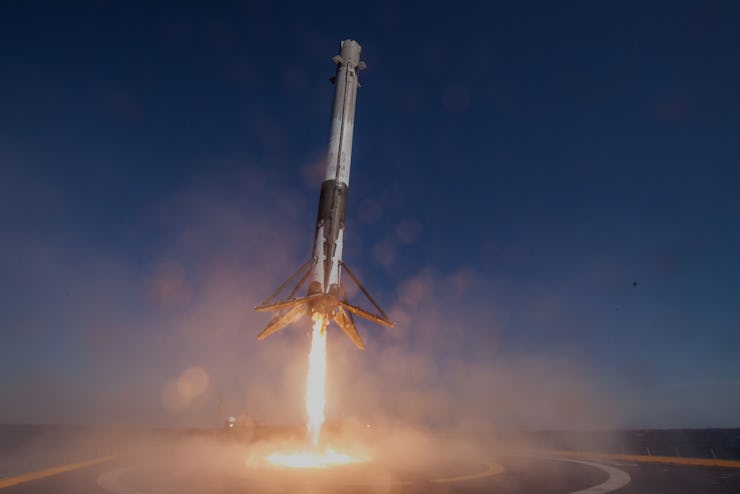SpaceX Won't Attempt a Spectacular Landing Tuesday. Here's Why

SpaceX will launch a communications satellite into orbit in the wee hours of the morning on Tuesday (or late Monday night if you’re in California). Unlike most of the company’s launches for the past two years, SpaceX won’t attempt to land its Falcon 9 first stage booster back on Earth. This mission is simply too complicated.
Here’s the deal: SpaceX is trying to deliver EchoStar 23, a communications satellite, into what’s called geostationary transfer orbit, or GTO. This is a region of space farther beyond Earth’s atmosphere than where satellites typically — and it’s essential for making communications satellites function as they need to.
For this particular mission, the Falcon 9 rocket needs speed all the way up more than 22,00 miles above the surface of the planet. EchoStar 23 also weighs a hefty 12,000 pounds. Those two considerations alone mean the launch is going to need a lot more propellant to jet off to its target altitude than most missions require.
And that also means less propellant will be available to attempt a landing. SpaceX already accounts for rocket landings from GTO by using a droneship in the middle of the ocean — which can maneuver back and forth to give the Falcon 9 some leeway for where it can land.
For Tuesday’s mission, there won’t be enough propellant to even ensure a safe droneship landing.
For its part, SpaceX doesn’t seem content with these kinds of limitations. The company is working on a variant of its rocket called Falcon 9 Full Thrust, which would use super-chilled liquid oxygen that could allow for more propellant to fit inside the tank — meaning more propellant available for launch and landing.
There’s also another development that could salvage rocket boosters on future missions like EchoStar 23 — the upgraded Falcon 9 Block 5 rocket, which would exhibit better thrust capabilities and more efficient legs for landing. “Falcon 9 Block 5 — the final version in the series — is the one that has the most performance and is designed for easy reuse,” SpaceX CEO Elon Musk wrote in a Reddit AMA last year. Future flights might also go up on the Falcon Heavy rocket.
Tuesday’s launch will take place at 1:34 a.m. EST, with a backup launch window taking place on Thursday, March 16, at 1:35 a.m. EST. You can tune into the webcast for the mission (starting around 1:15 a.m.) at SpaceX’s website.